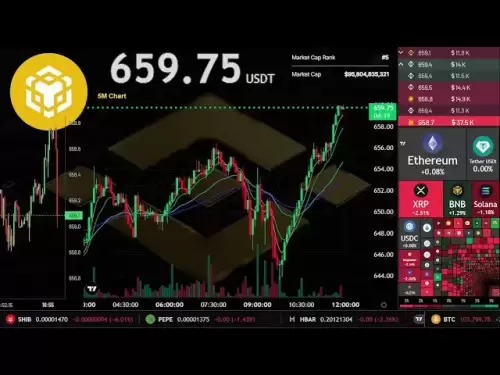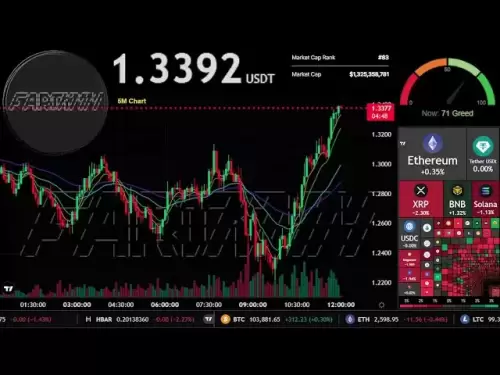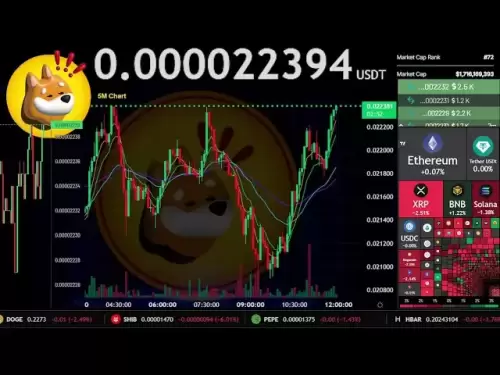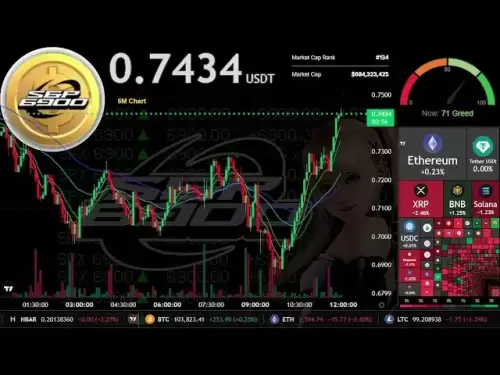 |
|
 |
|
 |
|
 |
|
 |
|
 |
|
 |
|
 |
|
 |
|
 |
|
 |
|
 |
|
 |
|
 |
|
 |
|
Cryptocurrency News Articles
Pareto Labs launches USP synthetic dollar to bridge institutional investors with DeFi opportunities
May 15, 2025 at 06:01 pm
The newly launched USP synthetic dollar is fully backed by real-world private credit
Private credit marketplace Pareto has launched a new synthetic dollar aimed at linking institutional investors with decentralized finance (DeFi) lending and yield opportunities.
The newly launched USP synthetic dollar is fully backed by real-world private credit assets, Pareto announced on May 15. To mint USP, users must deposit stablecoins such as USDC (USDC) and USDt (USDT), which are then held as collateral.
"USP is backed 1:1 by the stablecoins used during the minting process," said Pareto co-founder Matteo Pandolfi.
The deposited funds are placed into Pareto’s credit vaults and lent to what the company describes as "vetted institutional borrowers," generating yields for participants.
To maintain its peg to the US dollar, Pareto uses what it calls a "native backing" process. Each USP token is minted only when an equivalent amount of USDC or USDT is deposited, ensuring full collateralization when the token is created. An arbitrage mechanism also supports the dollar peg’s ongoing stability.
In addition, Pareto has set up a protocol-funded stability reserve to act as a buffer in case of borrower defaults.
Institutional entry into RWA credit market
The company said the synthetic dollar provides a regulated onchain entry point for institutional investors into real-world asset (RWA) credit markets — a segment of the tokenization industry that has expanded rapidly over the past year.
Recent examples of private credit tokenization include Tradable’s portfolio of 30 credit positions and Apollo’s Diversified Credit Securitize Fund.
When asked about the potential risks of connecting DeFi to the often opaque private credit sector, Pareto acknowledged the concern but emphasized its approach to risk management.
"That’s a fair concern, but Pareto was specifically built to address the inefficiencies and opacity that have historically plagued traditional credit markets," Pandolfi said.
"All of our borrowers undergo rigorous due diligence, and our lending protocols are designed with best-in-class risk mitigation measures to protect lenders’ capital."
Stablecoins: From crypto niche to the mainstream
Although synthetic dollars account for a small fraction of the total stablecoin market, they are driving innovation by introducing new methods for creating and managing fiat-pegged assets.
Ethena, the largest synthetic dollar network by market capitalization, offers Staked USDe (sUSDe) tokenholders an annual percentage yield of 10%. Roughly 368,000 investors were earning yield as of January, according to data from DeFi protocol Chainlink.
Despite the success of synthetic variants, collateralized stablecoins continue to dominate the market — a position US regulators are keen to preserve through proposed legislation like the GENIUS Act and STABLE Act.
Under President Donald Trump, the US government has recognized the role of stablecoins as a "way to support the dollar’s worldwide use as a reserve currency," Komodo Platform's chief technology officer, Kadan Stadelmann, told ChainLI nk in a written statement.
"Stablecoins are the second-most adopted blockchain use case behind Bitcoin — more than NFTs and DeFi," he said. "US dollar-pegged stablecoins account for a mind-boggling 1% of the M2 money supply."
Sergey Gorbunov, CEO of Interop Labs and co-founder of Axelar Protocol, said US regulators are prioritizing stablecoin legislation because they know there’s more at stake than just crypto.
"This is about setting the conditions for regulated US financial firms to be able to fully participate in and lead on stablecoins, and for the US dollar to maintain its primacy, globally," Gorbunov told ChainLI nk.
Disclaimer:info@kdj.com
The information provided is not trading advice. kdj.com does not assume any responsibility for any investments made based on the information provided in this article. Cryptocurrencies are highly volatile and it is highly recommended that you invest with caution after thorough research!
If you believe that the content used on this website infringes your copyright, please contact us immediately (info@kdj.com) and we will delete it promptly.
-

- Polymarket's prediction of Dogecoin reaching above $0.24 is coming to an end tomorrow, with only 13% believing it will happen.
- May 16, 2025 at 02:50 am
- DOGE will always be seen as the cryptocurrency that started the meme coin craze, but despite its nature, it became a legitimate investment prospect for many over time.
-

-

-

-

-

-

- Coinbase, the Largest U.S. Cryptocurrency Exchange, Gets Some Good News: The Securities and Exchange Commission Is Dropping a Lawsuit
- May 16, 2025 at 02:35 am
- Not long after President Trump took office, Coinbase, the largest U.S. cryptocurrency exchange, got some good news: The Securities and Exchange Commission was dropping a lawsuit that had accused the company of illegally marketing digital currencies to the public.
-

-





























































